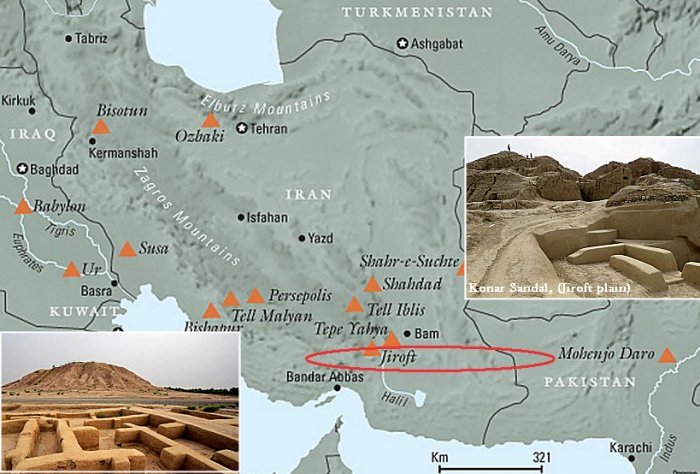Jiroft’s Konar Sandal – Home To A Huge Ziggurat And Many Ancient Treasures
Angela Sutherland - AncientPages.com - More than a hundred historical sites are recognized in the basin of a 400 kilometer stretch of Halil-Rud River in the south of Kerman province, a historically and archaeologically significant region of Iran.
Among these places of a high cultural value, Konar Sandal is a Bronze Age archaeological site situated just south of Jiroft, Kermān Province, Iran. The Konar Sandal has many treasures, which we mention later in this article. First of all, the site has a ziggurat-like structure. It is today known as the Konar Sandal Ziggurat.
Before the discovery of the ziggurat in 2002, Chogha Zanbil, a significant leftover of the Elamite civilization near Susa, was the only surviving ziggurat in Iran. Built about 1250 BC during the Middle Elamite Period (c. 1500 – c. 1100 BC) by king Untash-Napirisha, to honor Sumerian god Inshushinak, Chogha Zanbil ziggurat has long remained the only still existing structure of this type
Yusef Majidzadeh, the director of the archaeological team working at the site, led excavations in the region for more than two decades. He said that the central part of the Konar Sandal Ziggurat is the lower part and is 200 years older than the upper section. Thus, the construction of the ziggurat was carried out in stages beginning in 2200 BC, and now, archaeologists have determined the original shape of the Konar Sandal Ziggurat. It will make the restoration of the ziggurat much easier.
Stone vessel, architectural decoration, Jiroft, Kerman, Iran. Image source
Two superimposed platforms are located on the mound of Konar Sandal North. The upper structure measures 150 x 150 m, and the lower 300 x 300 m. These measurements help us imagine that this gigantic ziggurat covered almost the whole mound and was constructed of more than four million mud bricks. There are still questions regarding the Konar Sandal Ziggurat, and particularly, the large platforms that form a stepped massif and resemble the ziggurats of Mesopotamia.
Also interesting, although not precisely explained, is a two-story citadel with a base covering approximately 13.5 hectares (33 acres) and surrounded by a fortress wall, which is 10.5 meters (34′) thick. While the ziggurat is a pyramid-like structure consisting of tiered platforms, a citadel, on the other hand, suggests a fortified building.
Jiroft - with more than a hundred historical sites - has ruins and artifacts dating back to the third millennium BC. Both Yusef Majidzadeh many other experts from Iran and abroad consider that the archaeological findings in Jiroft shed light on the so-called “Jiroft civilization” that existed between Mesopotamia and Indus valley and dated back to 3000 BC. They believe that Jiroft was the ancient city of Aratta, described as a great civilization in a Sumerian clay inscription.
Probably, it was an independent Bronze Age civilization with its own architecture and language, and the ruins may be the remains of the lost Aratta Kingdom.
Konar Sandal artifacts. source
However, the exact location of this civilization is unclear. Some scholars believe that Aratta was situated in Jiroft, but others suggest the kingdom was located in Azerbaijan, Baluchistan, or even the Gulf.
A New Writing System Discovered At The Site Of Konar Sandal
A few years ago, a new writing system probably dated to the second half of 3000 BC was unearthed at the site of Konar Sandal.
Three of them represent a Linear Elamite inscription and a second inscription with unknown signs dubbed as ‘Geometric.’ The fourth tablet remains enigmatic. However, according to scientists, the analyzed geometric signs dated to 3000 BC suggest that they may be musical scores.
In our article “Is Mysterious Prehistoric Jiroft The Legendary Land Of Aratta? we write that “many valuable objects, including two clay inscriptions carrying the oldest human scripts, have been unearthed during authorized excavations in the region.
Numerous fascinating artifacts unearthed at the site are of great value. There are two remarkable stone reliefs unearthed in the Konar Sandal. They are carved on soapstones and depict two men with human faces and snake bodies instead of legs.
Still, not much is known about this region of Iran. Excavations carried out from 2006 to 2009 revealed the remains of three settlements dated to 4000 BC. Even more, artworks were unearthed in 2014, and these finds attest that the ancient people of this region had not one but several writing systems.
Written by – A. Sutherland - AncientPages.com Senior Staff Writer
Copyright © AncientPages.com All rights reserved. This material may not be published, broadcast, rewritten or redistributed in whole or part without the express written permission of AncientPages.com
Expand for referencesReferences:
More From Ancient Pages
-
 Why Some Stories About Ancient Roman Emperor Nero Are Wrong
Featured Stories | Nov 21, 2016
Why Some Stories About Ancient Roman Emperor Nero Are Wrong
Featured Stories | Nov 21, 2016 -
 525-Million-Year-Old Fossil Defies Textbook Explanation For Brain Evolution
Archaeology | Nov 25, 2022
525-Million-Year-Old Fossil Defies Textbook Explanation For Brain Evolution
Archaeology | Nov 25, 2022 -
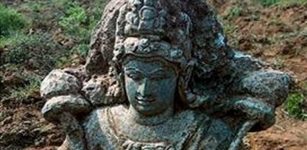 10th Century Sculpture Of Sun God Surya Accidentally Found In Farmland In Andhra Pradesh
Archaeology | Nov 16, 2020
10th Century Sculpture Of Sun God Surya Accidentally Found In Farmland In Andhra Pradesh
Archaeology | Nov 16, 2020 -
 Controversial Roman Emperor Heliogabalus Wanted To Be A Woman And Much More
Featured Stories | Jun 14, 2020
Controversial Roman Emperor Heliogabalus Wanted To Be A Woman And Much More
Featured Stories | Jun 14, 2020 -
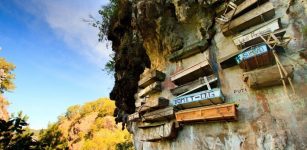 ‘Aerial Cemetery’ – Ancient Tradition Of ‘Hanging Coffins’
Ancient Traditions And Customs | Sep 9, 2018
‘Aerial Cemetery’ – Ancient Tradition Of ‘Hanging Coffins’
Ancient Traditions And Customs | Sep 9, 2018 -
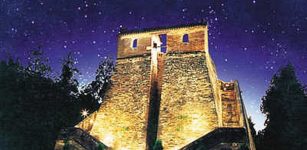 Gaocheng: China’s Oldest Observatory And Large Gnomon Installation Of The Ancients
Ancient Technology | Nov 5, 2016
Gaocheng: China’s Oldest Observatory And Large Gnomon Installation Of The Ancients
Ancient Technology | Nov 5, 2016 -
 New York Was Once Called New Amsterdam – History Behind The Change Of Name
Ancient History Facts | Jan 14, 2017
New York Was Once Called New Amsterdam – History Behind The Change Of Name
Ancient History Facts | Jan 14, 2017 -
 Never-Before-Seen 5,000-Year-Old Mysterious Monument On Isle Of Arran Discovered By LIDAR
Archaeology | Jan 27, 2021
Never-Before-Seen 5,000-Year-Old Mysterious Monument On Isle Of Arran Discovered By LIDAR
Archaeology | Jan 27, 2021 -
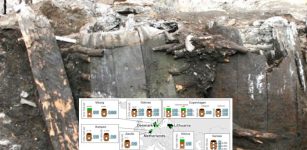 DNA In Viking Poop Sheds New Light On 55,000-Year-Old Relationship Between Gut Companions
Archaeology | Sep 5, 2022
DNA In Viking Poop Sheds New Light On 55,000-Year-Old Relationship Between Gut Companions
Archaeology | Sep 5, 2022 -
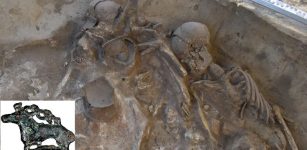 2,000-Year-Old Tumulus Of Unknown Culture Discovered In Siberia – Who Were These People?
Archaeology | Jan 4, 2023
2,000-Year-Old Tumulus Of Unknown Culture Discovered In Siberia – Who Were These People?
Archaeology | Jan 4, 2023 -
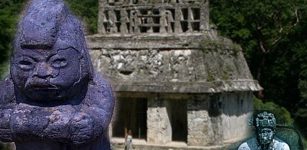 Origins Of Maya Civilization More Complex Than Thought
Civilizations | Apr 26, 2013
Origins Of Maya Civilization More Complex Than Thought
Civilizations | Apr 26, 2013 -
 Huge Viking Age Mason Owned By Herigar Finally Found At Birka In Sweden
Archaeology | Jan 23, 2017
Huge Viking Age Mason Owned By Herigar Finally Found At Birka In Sweden
Archaeology | Jan 23, 2017 -
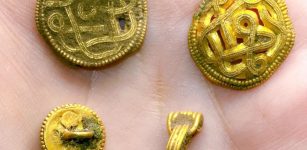 Spectacular Ancient Gold Treasure Found In Denmark – Was It A Gift To Please Angry Gods?
Archaeology | Sep 24, 2018
Spectacular Ancient Gold Treasure Found In Denmark – Was It A Gift To Please Angry Gods?
Archaeology | Sep 24, 2018 -
 New Chemical Reactions To Generate Building Blocks Of Proteins And DNA – Discovered
DNA | Jul 29, 2022
New Chemical Reactions To Generate Building Blocks Of Proteins And DNA – Discovered
DNA | Jul 29, 2022 -
 Guardians Of The Mounds – Battle To Save Scythian Burial Mounds From Destruction Continues
Archaeology | May 11, 2021
Guardians Of The Mounds – Battle To Save Scythian Burial Mounds From Destruction Continues
Archaeology | May 11, 2021 -
 Queen Mavia And The Tanukhids Launched A Massive Revolt Against Romans – But Why?
Featured Stories | Mar 18, 2023
Queen Mavia And The Tanukhids Launched A Massive Revolt Against Romans – But Why?
Featured Stories | Mar 18, 2023 -
 Viking Fashion: Men And Women Were Vain And Very Clean During The Viking Age
Ancient History Facts | Aug 12, 2017
Viking Fashion: Men And Women Were Vain And Very Clean During The Viking Age
Ancient History Facts | Aug 12, 2017 -
 Amazing Time Capsule – La Roche-Cotard Cave Sealed For 50,000-Years Offers Evidence Neanderthals Were The World’s First Artists
Archaeology | Nov 22, 2023
Amazing Time Capsule – La Roche-Cotard Cave Sealed For 50,000-Years Offers Evidence Neanderthals Were The World’s First Artists
Archaeology | Nov 22, 2023 -
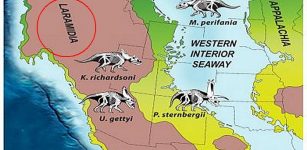 Rare Fossil Of A Dog-Sized Horned Dinosaur From ‘Lost Continent’ Identified By British Scientist
Archaeology | Dec 5, 2015
Rare Fossil Of A Dog-Sized Horned Dinosaur From ‘Lost Continent’ Identified By British Scientist
Archaeology | Dec 5, 2015 -
 Power Of Water In Beliefs Of Ancient Cultures
Featured Stories | Apr 9, 2019
Power Of Water In Beliefs Of Ancient Cultures
Featured Stories | Apr 9, 2019

